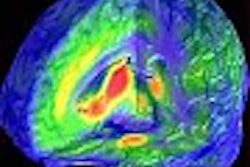Storage archives and media have always been one of the biggest cost components in a PACS network. But falling prices for archiving technology and faster networking approaches are having the beneficial effect of enabling PACS users to install faster archives at a lower cost than was possible just a few years ago.
Indeed, the old model of a three-tier PACS archive is becoming obsolete, replaced by a two-tier architecture with robust server-based storage to handle short-to-mid-term requirements and a long-term archive that also meets backup/disaster recovery needs, according to Dr. Steven Horii of the University of Pennsylvania. Dr. Horii spoke on the evolution of PACS archives in a presentation at last week’s PACS 2003: Integrating the Healthcare Enterprise meeting -- we’re featuring his comments this week in our PACS Digital Community.
A key philosophy driving the development of new storage models is the concept of the enterprise database, in which any user anywhere can have access to the information they’re looking for, Dr. Horii said. Data access should occur transparently, without the user having to worry about where the data is located or what media it’s stored on.
Some sites are even pursuing an "all-disk" archiving approach, which would have been prohibitively expensive just a few years ago. Dr. Horii has words of advice for PACS users considering this approach, and also dispenses wisdom on topics ranging from data security to disaster recovery.
Get the whole story in our PACS Digital Community, at pacs.auntminnie.com. And if you’ve got any questions after reading the article, head over to our PACS Discussion Group, where you can put your query to an expert group of PACS users -- AuntMinnie members.



















